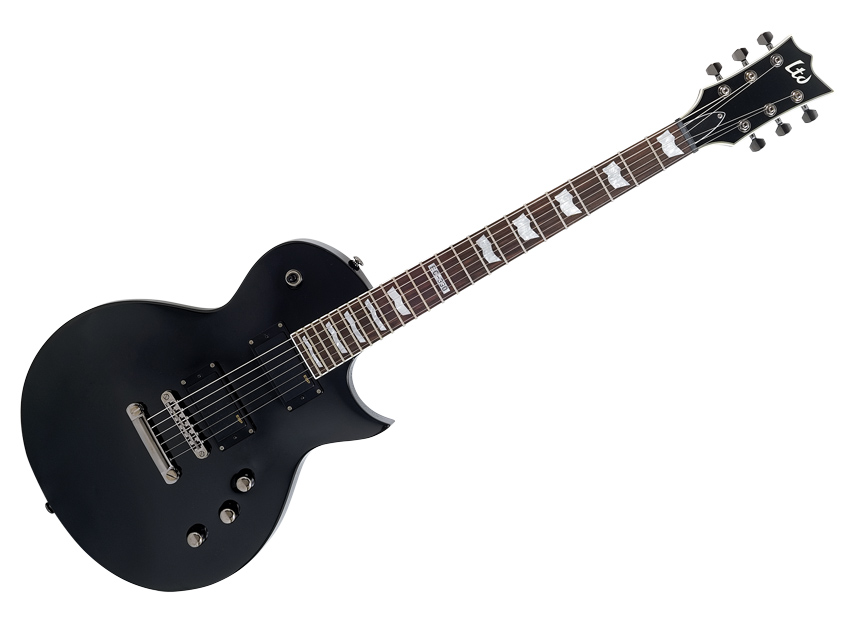MusicRadar Verdict
The EC is fine for cleans, but the metal tones let it down.
Pros
- +
Lightweight; comfortable to play; extensive controls.
Cons
- -
The lack of finish options is most evident here.
MusicRadar's got your back
Like most mainstream guitar companies, ESP constantly strives to identify gaps in both the market as a whole and within its own catalogue; after all, where there's opportunity, there's the chance to make a nice wedge.
Thanks to the endorsement of a number of A-list metal bands, not least Metallica, Slayer and Children Of Bodom, the vibe of many ESP and the firm's lower priced LTD guitars is intertwined with the dark art of high-octane rock - boasting active pickups, fast necks and a sturdy construction.
"The EC's metal tones are none too convincing, causing us to have some doubts about the pickups."
This shiny new Indonesian-made LTD 330 Series subscribes wholeheartedly to the ideal. Aimed at players who are meagre of pocket but flush with ambition, it fits snugly between the cheaper end of the catalogue and those models suited to semi-pro players with a bigger budget. Each of the five incumbents feature a bolt-on neck, just one choice of finish per model and come loaded with the new ESP-branded active ALH-200 pickups.
"The new ALH-200 set features ceramic bar magnets to cover any string spacing and to give plenty of punch along with the moderate output coil windings," ESP tells us. "Although active, we wanted to keep more of an organic sound, so players will notice that our pickups do offer a moderate amount of gain, and we feel that players can actually use our active pickups with their existing amps and not feel like they are completely changing their sound."
Do these guitars offer yet more choice or further muddy the waters? We've been looking at four of the five new models - the M-330R, the Viper-330, the EC-330 and the H-330NT - to try to find out.
Smooth contours
ESP's single-cutaway EC and Eclipse ranges include some lovely guitars - James Hetfield, for example, swears by his Truckster and Iron Cross - and when set-up well, they produce a wonderful noise.
Here the complement of controls is further expanded to include independent volume pots alongside a master tone and, at 49mm at its thickest, the mahogany body is sufficiently slender to reduce weight without, in theory, having an adverse on the tone. It also offers some smooth contours, including some shaping around the entire neck plate and behind the cutaway - there's even a subtle central arch.
The maple neck is nicely finished and gives a profile that feels compact, especially at the lower frets.
Sounds
Tone-wise the EC sits between its siblings the M and Viper - it has less depth than the latter but a better overall balance than the former, and the lightweight construction makes it arguably nicer to play than either.
Sadly, like its stablemates, the EC's metal tones are none too convincing, causing us to have some doubts about these pickups. When compared with EMG-equipped models, the EC just doesn't cut it if you require tight aggression and fire to your riffs.
At lower gains, things perk up and on the off chance an all-black guitar such as this screams lighter, bouncier tones, there are plenty to enjoy in the EC-330. We're just not sure that's the target market here.
Simon Bradley is a guitar and especially rock guitar expert who worked for Guitarist magazine and has in the past contributed to world-leading music and guitar titles like MusicRadar (obviously), Guitarist, Guitar World and Louder. What he doesn't know about Brian May's playing and, especially, the Red Special, isn't worth knowing.
“Every post feels like a test. If it flops I feel like a failure”: 61% of DJs feel that their social media presence is more important than their skill
“This update reflects everything we believe modern gear should be”: Neural DSP gives the Nano Cortex an almighty power-up with free NanOS 2.0.0 system update
“It’s honestly got me thinking hard about adding one to my own studio set up”: Two Notes Reload II review










